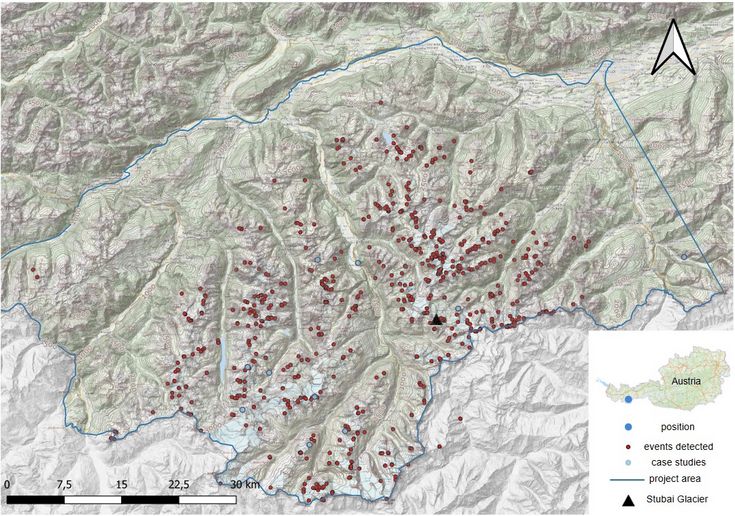Assessing the impact of climate change on the formation of rock fall, rock avalanches and rock slides
Supervisor: Christian ZANGERL
Project assigned to: Lukas PRANDSTÄTTER
My research focuses on the impact of climate change on rock fall and rock slides in high alpine environments. Rock falls and rock slides are a common hazard in alpine terrain and are major factor of alpine landscape evolution. They are characterized by a combination of geological, hydrological, geomechanical and meteorological processes and occur in a wide variety of geological and structural settings and in response to various loading and triggering processes. In the Alps in particular, landslides have the potential to cause serious damage to both humans and infrastructure. As global warming progresses, the meteorological and climatological factors that influence landslide formation will change. The aim of the dissertation is to determine whether and which meteorological and climatic patterns associated with climate change affects the formation of landslides, and which complex combination of geological, hydrological and structural settings are involved. For this purpose, we set up an in-situ rock slope laboratory on Stubai glacier (Fig.2) to observe the slope deformation processes with a high temporal resolution and conduct an investigation of selected case studies (Fig.1) of rock avalanches with a volume above several tens of thousands of cubic meters.

Figure 1 shows the study area framed in blue. The red dots mark events from the rockfall inventory, the selected case studies are marked by blue dots. The black triangle marks the location of the rock slope laboratory on the Stubai Glacier.
A variety of different methods are used to achieve the research objectives. Advanced remote sensing techniques like TLS and ALS to gain high-resolution data of rock faces. UAV photogrammetry filled gaps where TLS campaigns are not possible. Geological field investigations to record a structural, lithological and hydrological record are carried out, forming a comprehensive model. A 3D discontinuity network was developed based on the combined analyses of remote sensing and discontinuity mapping data, providing the basis for structural geological analyses and distinct element modelling studies.

Figure 2: In-situ rock slope laboratory on the Stubai Glacier with the locations of the temperature data loggers and the thermo-orthomosaic of the rock surface temperature based on UAV-thermography.
